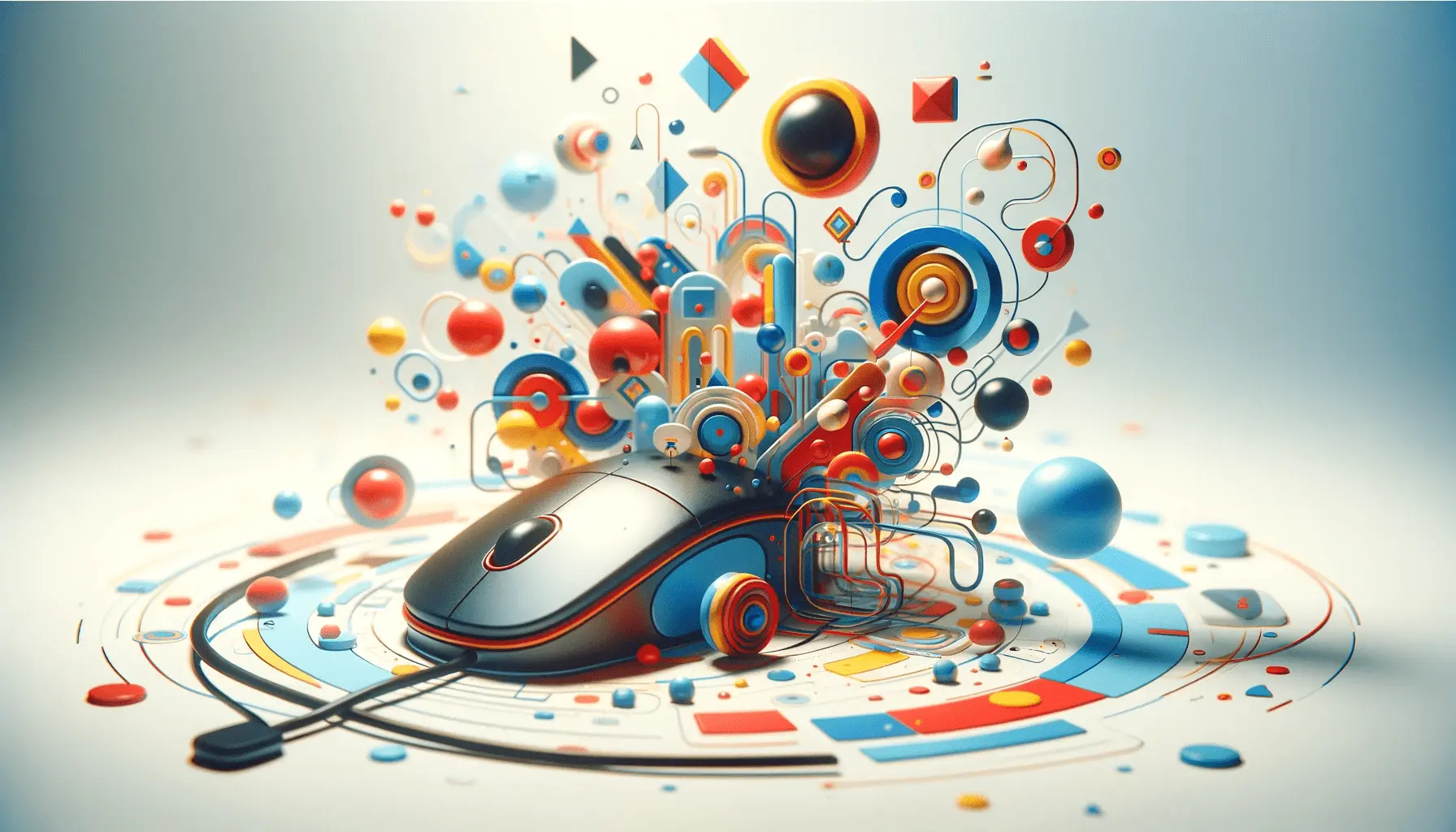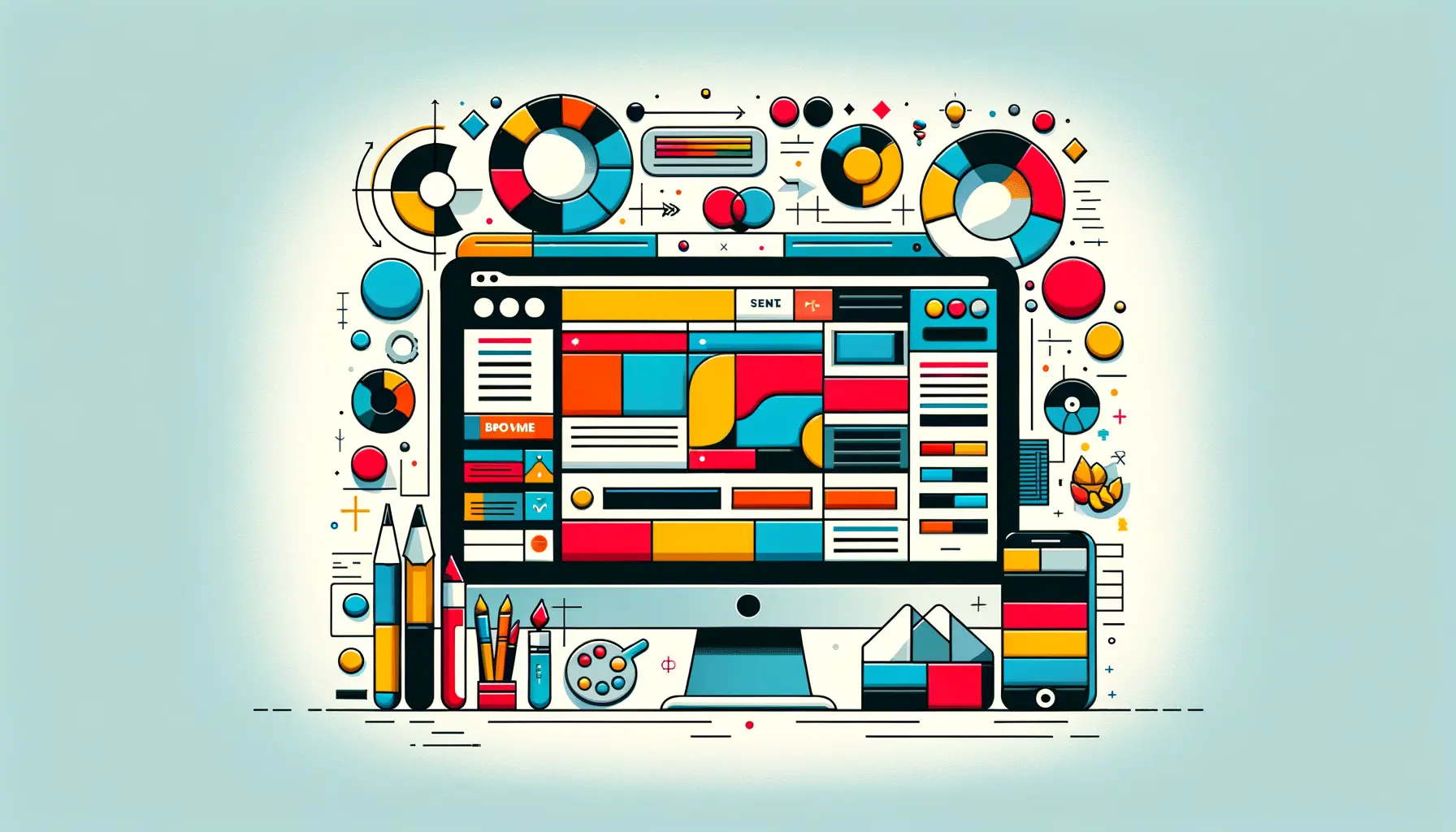Picture arriving at a website that doesn’t merely present information to you—it draws you in, provides goals, and rewards your achievements.
That’s the magic of gamified user experiences.
Nowadays, users hunger for more than fixed pages.
They need to feel engaged.
They need fun, challenge, and a motive to linger.
That’s where web design merges with gamificationThe application of game-design elements in non-game contexts to engage users.—and magic is created.
In this article, we’re diving into the playful realm of gamified user experiences.
You’ll learn what they are, how they function, and why they’re quickly becoming standard in modern web design.
If you’re a web designer, business owner, or digital marketer, an understanding of gamified user experiences can help you create more engaging, interactive, and profitable websites.
- What Are Gamified User Experiences in Web Design?
- Core Ingredients of Gamified User Experiences
- Design Strategies for Gamifying Websites
- Real-Life Examples of Gamified User Experience
- Challenges and Future Trends in Gamified User Experiences
- Enhancing Web Design With Gamified User Experiences
- Frequently Asked Questions Regarding Gamified User Experiences
What Are Gamified User Experiences in Web Design?
Let’s start at the beginning.
Gamified user experiences are web experiences that are designed with game-like elements to encourage interaction, motivation, and engagement.
Instead of just clicking around aimlessly, users are invited to participate—doing tasks, earning points, unlocking levels, or earning rewards.
It’s all about making the user experience more enjoyable and memorable.
Think of fitness apps that track your steps and reward you with badges.
Or online learning sites that level you up as you progress.
All of these are perfect examples of gamified user experiences in action.
Definition and Evolution of Gamification
Gamification in web design is the implementation of game mechanics in digital interfaces.
It’s about turning mundane user tasks into fun.
The trend started gaining popularity in the 2010s, and it’s now a cornerstone of smart, user-focused design.
- Gamified user experiences leverage rewards to push engagement.
- They often include challenges, levels, points, and visual progress bars.
- They evolve constantly based on user behavior and technological trends.
Why Gamification Matters in Web Design
Websites are no longer static—they’re interactive.
Gamified user experiences enhance user retention, increase conversions, and form emotional connections.
When done right, gamified user experiences can reduce bounce rates and enhance time on your site.
- It keeps users involved and focused.
- It makes experiences memorable.
- It encourages users to perform activities like registering or buying.
Key Psychological Principles Behind Gamification
Gamified user experiences are based on human psychology—especially the desire for achievement, recognition, and fun.
These experiences are designed around things that move us.
- Progression: We like to see how far we’ve come.
- Reward: We’re wired to enjoy rewards.
- Challenge: A bit of effort makes achievement more rewarding.
How User Expectations Are Defining Gamified Experiences
Users nowadays expect more than static sites.
They’re used to platforms and apps that reward their time and attention.
So, gamified user experiences are increasingly becoming the norm—not the exception.
If you want to stand out online, you have to design for interaction.
That means thinking like a game designer—where every click, scroll, and tap is purposeful and fun.
Ready to redesign your approach to web design?
Gamified user experiences transform passive browsing into active participation by adding layers of fun, motivation, and engagement.
Core Ingredients of Gamified User Experiences
When designing engaging and successful gamified user experiences, it’s critical to implement essential game design elements that get users engaged and delighted.
Let’s dive into these core ingredients:
Objectives
Having defined goals gives direction and meaning to users.
When users know what they have to do, they’ll be more likely to become engaged and motivated to hit those targets.
Objectives are milestones along the gamified user experience journey.
Rewards
Rewards in the form of points, badges, or virtual goods reward user achievement and encourage repeat usage.
They are driven by the user’s desire for status and achievement and function to reinforce behavior positively on platforms with gamified user experiences.
Competition
Leaderboards and challenges provide an element of competition, prompting users to improve performance.
Mild competition can drive user engagement and foster a sense of community within gamified user experiences.
Progression
Visual indicators like progress bars or levels allow users to see how they have progressed over time.
This sense of advancement satisfies the human desire for mastery and progress, causing users to keep coming back to platforms that offer gamified user experiences.
Feedback
Immediate and clear feedback lets users know what the result of their actions will be, which allows them to adjust their behavior accordingly.
Good feedback mechanisms are crucial to maintaining user motivation and guiding users toward desired behavior in gamified user experiences.
Through the proper integration of these elements, designers can produce successful and enjoyable gamified user experiences that result in enhanced user satisfaction and involvement.
To build effective gamified user experiences, focus on well-balanced elements like rewards, competition, and feedback that sustain user interest and drive action.
Design Strategies for Gamifying Websites
Integrating gamification into web design can transform user engagement, making interactions more enjoyable and productive.
By applying thoughtful design strategies, you can craft gamified user experiences that truly resonate with your audience.
Here are some effective strategies to consider:
Understand Your Audience
Begin by identifying your target users’ preferences and behaviors. Tailor game elements to resonate with their motivations, ensuring the gamified user experience aligns with their interests. This user-centered approach enhances relevance and engagement.
Set Clear Objectives
Define specific goals for your gamification efforts. Whether it’s increasing user retention, boosting sales, or enhancing learning outcomes, clear objectives guide the design process and measurement of success within gamified user experiences.
Incorporate Game Mechanics
Utilize elements such as points, badges, leaderboards, and challenges to motivate users. These mechanics tap into intrinsic desires for achievement and competition, fostering deeper engagement in gamified user experiences.
Develop a Compelling Narrative
Crafting a meaningful story around your gamified elements can immerse users, making their experience more engaging. A well-designed narrative provides context and purpose, enhancing the overall gamified user experience.
Provide Immediate Feedback
Ensure users receive instant responses to their actions, such as progress indicators or congratulatory messages. Immediate feedback reinforces positive behavior and keeps users informed about their achievements within the gamified user experience.
Balance Challenge and Skill
Design challenges that are neither too easy nor too difficult. Aligning tasks with users’ skill levels maintains interest and prevents frustration, promoting a state of flow in gamified user experiences.
Foster Social Interaction
Encourage community building through features like team challenges, social sharing, and forums. Social interaction enhances motivation and creates a sense of belonging among users in gamified user experiences.
Ensure Ethical Implementation
Apply gamification responsibly by respecting user autonomy and avoiding manipulative tactics. Ethical design fosters trust and sustains long-term engagement in gamified user experiences.
By thoughtfully applying these strategies, designers can create gamified user experiences that are both enjoyable and effective, leading to increased user satisfaction and loyalty.
Gamification isn’t just about fun—it’s a design mindset that blends user psychology with interactivity to produce measurable business outcomes.
Real-Life Examples of Gamified User Experience
The use of gamified user experiences in web design has led to creative websites that engage users in interactive and rewarding experiences.
Let us examine some notable examples:
Duolingo: Making Language Learning Fun
Duolingo, the popular language-learning application, employs a variety of gamified user experience features to motivate users.
Through the utilization of points (XPShort for 'experience points', commonly used in games to measure a player's progress or skill.), streaks, and in-app currencies, Duolingo encourages users to practice every day and maintain long-term commitment.
Users can choose to compete against their friends, earn rewards, and unlock levels along the way, making learning enjoyable and addictive.
Peloton: Fitness Through Competition
Peloton, a fitness application that offers access to various fitness classes, includes gamified user experience elements to aid in motivating users.
It even allows users to see others doing the same workout and compare performances in real time.
This competitive aspect pushes users to work harder and stay committed to their fitness goals.
Habitica: Gamifying Productivity
Habitica is a task manager that transforms daily chores into a role-playing video game.
The user creates an avatarA digital representation or icon of a user, often used in games or online platforms. and is rewarded for completing real-life tasks, basically rendering productivity a fun experience.
It employs gamified user experiences to enable habit formation and personal development.
Kahoot!: Interactive Learning Through Quizzes
Kahoot!
is a learning platform that utilizes gamified user experiences to render learning fun and interactive.
Educators create quizzes that the students take in real time, and they accrue points for right answers and swift responses.
The competitive nature of this setup improves engagement and knowledge retention among students.
These examples demonstrate how incorporating gamified user experiences can transform routine activities into engaging and motivating interactions.
By leveraging game design principles, platforms can enhance user satisfaction and foster long-term engagement.
Platforms like Duolingo, Peloton, and Habitica prove that gamification can be a powerful tool to inspire habit formation, community, and consistent engagement.
Challenges and Future Trends in Gamified User Experiences
Even though incorporating gamification in web design offers numerous benefits, there are some challenges involved.
It is essential to understand these challenges and be aware of future trends while designing successful gamified user experiences.
Challenges in Implementing Gamification
- Lack of Defined Objectives: Gamification without clearly defined objectives can result in user confusion and the inability to measure achievement. Well-defined objectives are crucial in order to drive the design and implementation process for gamified user experiences.
- User Burnout: Giving users endless tasks and challenges to complete may cause them to get tired and lose interest. Care should be taken to ensure a balance in engagement strategies so as not to overburden users within gamified user experiences.
- Technological Barriers: Developing and sustaining gamified user experiences is resource- and technology-intensive, making it difficult for organizations with limited resources.
- Measuring Effectiveness: Developing appropriate measures to assess the effectiveness of gamification is challenging in itself, thus measuring success and areas of improvement becomes difficult.
- Shaping Relevance into Mechanics: Features that are poorly designed can cause frustration or disinterest. Keeping mechanics aligned with users’ goals is key to maintaining engagement in gamified user experiences.
Future Trends in Gamified User Experiences
- Hyper-Personalization: The use of user data to personalize the experience and make it unique to each user’s wants and actions becomes increasingly important. This enhances engagement by allowing each interaction in gamified user experiences to reflect the personality of the individual user.
- Integration with Immersive Technologies: Use of Augmented Reality (AR), Virtual Reality (VR), and Mixed Reality (MR) will continue to grow, offering more interactive and immersive gamified user experiences.
- AI-Driven Gamification: Artificial Intelligence is being employed to dynamically alter content and challenges based on user behavior, delivering even more personalized and adaptive gamified user experiences.
- Focus on Ethical Gamification: There is a growing emphasis on developing gamified systems that respect user autonomy and avoid manipulative tactics. Ethical design promotes trust and encourages long-term engagement.
- Integration with Emerging Technologies: Trends like the Internet of Things (IoT) and blockchain are being explored to create more engaging and secure gamified user experiences.
By surmounting these challenges and taking advantage of future trends, designers can create attractive and effective gamified user experiences, leading to increased user satisfaction and loyalty.
Without ethical implementation and user-centered design, gamification risks becoming manipulative or ineffective over time.
Enhancing Web Design With Gamified User Experiences
Why Gamification Is Revolutionizing Digital Interaction
As the digital world continues to evolve, user expectations are shifting at breakneck pace.
Static websites no longer suffice—users crave interaction, challenge, and reward.
That’s where gamified user experiences come in.
By incorporating game-like elements into web design, you don’t just inform users—you engage them.
Whether it’s collecting points, unlocking levels, or completing tasks, gamification makes passive browsing a rewarding experience.
What Makes Gamified User Experiences Effective
During the course of this article, we strolled through the most essential components that provide gamified user experiences with effectiveness.
From badges and points to narrative and social interaction, they all contribute toward building motivation and loyalty.
Well used, gamification bridges the gap between user behavior and business goals.
Key Takeaways for Designers and Marketers
Designing successful gamified user experiences requires creativity and strategy.
Here are some things to remember as you integrate gamification into your web development efforts:
- Start with a clear understanding of your users and what motivates them.
- Set clear goals for what your gamified user experience must achieve.
- Include meaningful game mechanics like rewards, progress, and feedback.
- Use story and visual composition to maximize emotional investment.
- Balance ability and difficulty to keep users in a productive state of flow.
- Offer ethical gamification usage and respect for user agency.
Looking Ahead: The Future of Gamification in Web Design
The future gamified user experience is full of promise and potential.
Emerging technologies like AI, AR, and blockchainA decentralized digital ledger used to securely record transactions across multiple computers. are creating new opportunities.
Personalized, immersive, and ethical gamification will be the standard for how users interact with digital products and services.
With growing competition in the digital space, gamification will be a deciding factor for who receives and retains user attention.
Final Thoughts
As a web designer, digital marketer, or product strategist, gamified user experiences can elevate your digital presence.
It’s not about creating something ‘fun’—it’s about crafting significant, memorable, and user-focused experiences that matter.
When you combine game design with thoughtful UXShort for 'User Experience', referring to how a user interacts with and experiences a product or system. strategy, you can create web experiences that lead users back time and again.
Gamification isn’t just a trend—it’s a strategic advantage for building digital experiences that users remember, enjoy, and return to.
Quality web design is key for a great website! Check out our service page to partner with an expert web design agency.
Frequently Asked Questions Regarding Gamified User Experiences
Gamified user experiences introduce game components into non-game contexts to drive engagement and motivation.
A gamified user experience places game design elements into non-game contexts, driving user engagement and motivation.
Gamified user experiences apply game mechanics like points and challenges to stimulate users, making work more enjoyable and triggering more interaction.
Common features in gamified user experiences include points, badges, leaderboards, performance graphs, meaningful stories, avatars, and teammates.
Yes, gamified user experiences are used in marketing, employee motivation, and customer loyalty programs to encourage specific behaviors and increase engagement.
While gamified user experiences can increase engagement, their success depends on the preferences of the audience and the context in which they are implemented.
Gamified user experiences introduce game elements into existing systems, while game-based learning involves using complete games for educational purposes.
Challenges in creating gamified user experiences include defining clear goals, avoiding user fatigue, overcoming technical barriers, measuring impact, and ensuring the relevance of game mechanics.
The success of gamified user experiences can be measured using user engagement metrics, completion rates, behavioral data, and user feedback to assess motivation and outcomes.
Trends in gamified user experiences include hyper-personalization, integration with AR and VR, AI-driven dynamic content, and increased focus on ethical design practices.











